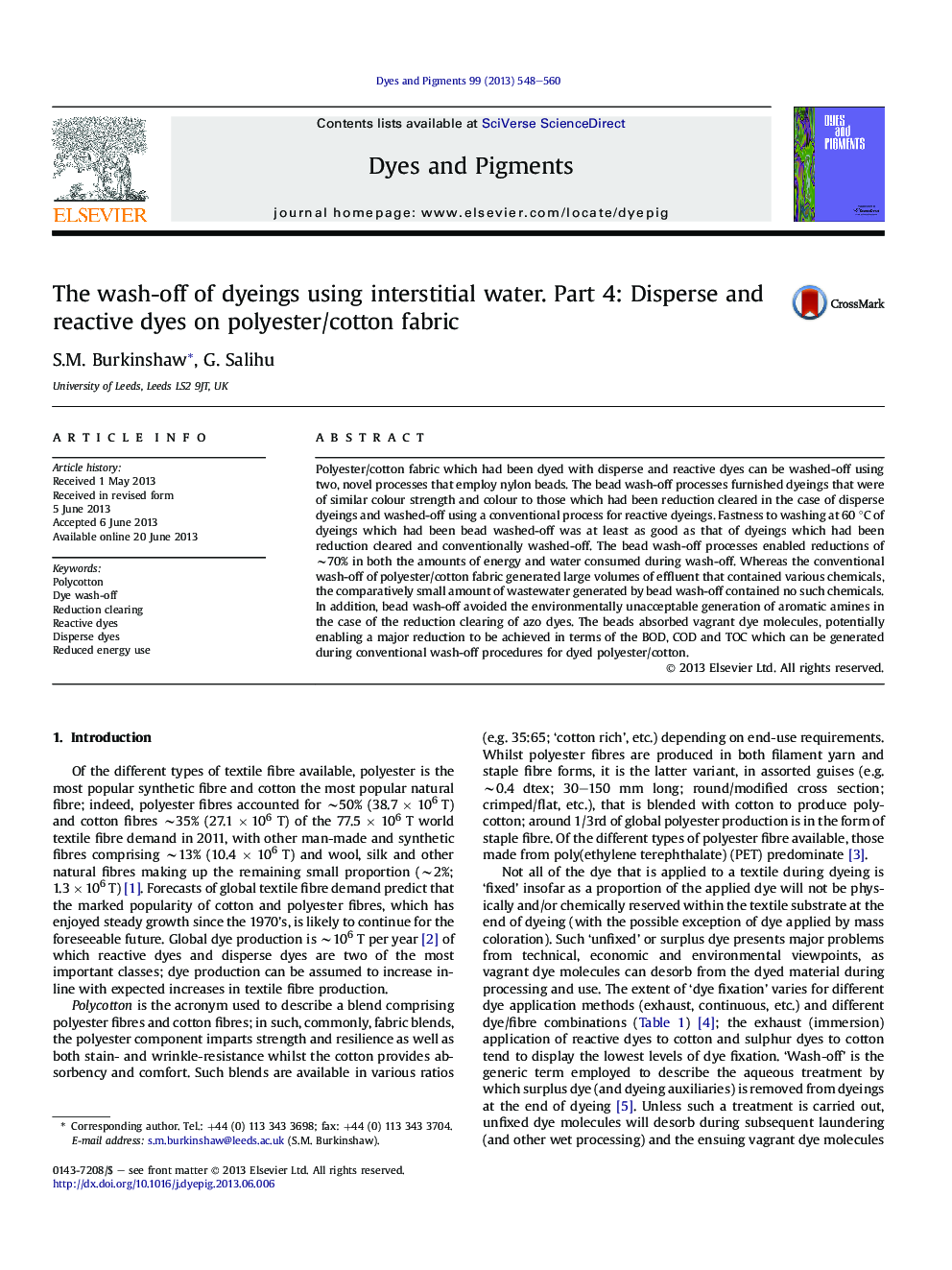| Article ID | Journal | Published Year | Pages | File Type |
|---|---|---|---|---|
| 176336 | Dyes and Pigments | 2013 | 13 Pages |
•A bead wash-off was devised for polycotton dyed with disperse and reactive dyes.•Bead wash-off resulted in same depth of shade and colour as conventional method.•Bead wash-off enabled reductions in energy and water usage.•Beads absorb vagrant dye thereby offering potentially reduction in effluent load.
Polyester/cotton fabric which had been dyed with disperse and reactive dyes can be washed-off using two, novel processes that employ nylon beads. The bead wash-off processes furnished dyeings that were of similar colour strength and colour to those which had been reduction cleared in the case of disperse dyeings and washed-off using a conventional process for reactive dyeings. Fastness to washing at 60 °C of dyeings which had been bead washed-off was at least as good as that of dyeings which had been reduction cleared and conventionally washed-off. The bead wash-off processes enabled reductions of ∼70% in both the amounts of energy and water consumed during wash-off. Whereas the conventional wash-off of polyester/cotton fabric generated large volumes of effluent that contained various chemicals, the comparatively small amount of wastewater generated by bead wash-off contained no such chemicals. In addition, bead wash-off avoided the environmentally unacceptable generation of aromatic amines in the case of the reduction clearing of azo dyes. The beads absorbed vagrant dye molecules, potentially enabling a major reduction to be achieved in terms of the BOD, COD and TOC which can be generated during conventional wash-off procedures for dyed polyester/cotton.
